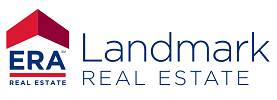Market Watch
Affordable, Attainable, Achievable
Posted on February 25, 2016The word “affordable” conjures up different visions depending on individual situations. One definition given is “believed to be within one’s financial means.” However you perceive housing affordability, it is always a hot topic for those in the real estate industry.
Prospera Business Network, our local economic development organization, recently published timely information that sheds some light on the ever-popular debate about the concept of affordable housing in Bozeman. The press release referred to the Cost of Living Index report which concludes that Bozeman is a relatively affordable location in comparison to other areas included in the report. The index score given to a town includes the classifications of housing, utilities, grocery items, transportation, health care, and miscellaneous goods and services. The housing index for Bozeman weighed in with the results that area housing was 12.9% higher than the national average (index of 112.9). Of the 272 towns that were used in the report, Manhattan, New York was the most expensive location with a housing index of 457.7, and the least expensive was McAllen, TX at 72.6. Full results of the press release can be accessed at www.ProsperaBusinessNetwork.org.
No matter the price of the home a buyer is interested in, if they are getting a loan the interest rate that can be obtained is very important. ERA Landmark Sales Associate, Saul Abel, recently wrote a blog post that is on our website which highlights how a small difference can result in a large overall impact. To use his calculation methodology with recent home price data, as of February 15th, the median price for a home for sale within the Bozeman city limits according to the Southwest Montana Multiple Listing Service was $395,000. Let’s assume the buyer is putting 5% down, leaving $375,250 to be financed. For the ease of round numbers, I’ll use a 4% interest rate for a 30-year fixed mortgage, resulting in a monthly principal and interest payment of approximately $1,792. Comparing this same scenario with a 5% interest rate raises the monthly amount to $2,014. If interest rates are expected to be climbing, that delay in purchase can result in an increased mortgage payment of $222/ month. Over the life of the loan, this is a sizable difference. Granted, rates don’t generally bump up a full percentage point within a couple of weeks’ time, but the example does show that time is of the essence in the world of real estate. To take this case even one more step, let’s say a buyer needs to keep their payment around the $1,800 mark for principal and interest from the above equation. An increased interest rate from 4% to 5% decreases their buying power from a $395,000 home to an approximately $353,000 home, which makes a significant difference in the property you are purchasing.
To delve a bit further into what tremendous opportunity borrowers have now compared to obtaining a mortgage in the past, it is interesting to look at a historic 30-year fixed-rate mortgage chart. Freddie Mac has one available to compare rates since 1971. To liken the snapshots in time, 3.87% is the rate listed for January 2016. The lowest rate listed is 3.35% in both November and December of 2012. The highest rate on the chart is 18.45% in October of 1981, but also noteworthy is that rates were in the double digits starting at the end of 1978 and remaining there throughout 1990. Since 2009, Freddie Mac has reported rates under 5.5% which has created optimal financial conditions for homebuyers and a great time for renters to break into homeownership if attainable.
The Federal Reserve increased its key interest rate back in December 2015 for the first time in almost ten years. It was a small increase, taking the range from 0% to 0.25% up to a range of 0.25% to 0.5%. Though the first response may be that we don’t want to see this change slow down our nation’s economic recovery, it actually shows confidence that the economy is on a much stronger footing and gradual increases should be able to be absorbed.
All said, 2016 has the makings of being another stellar year for real estate. The interest rates are historically low; rent increases are rising faster than home prices; lower down payments for some loan products make first-time homebuyer loans more manageable; and mortgage insurance for homebuyers with less than 20% equity has decreased for FHA loans, increasing affordability even more.
